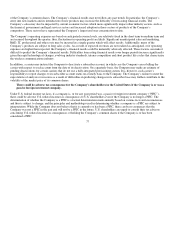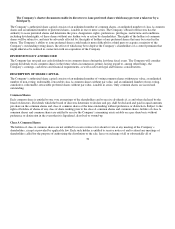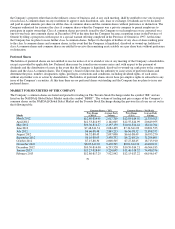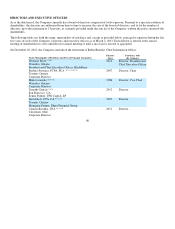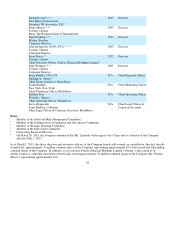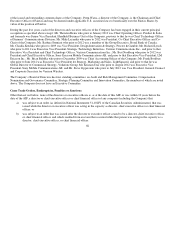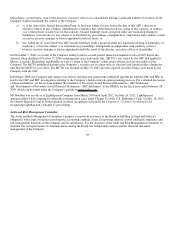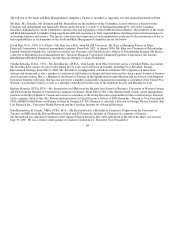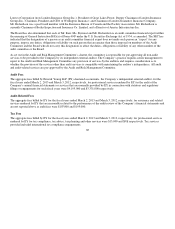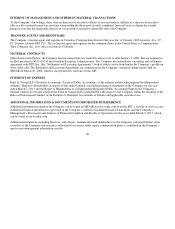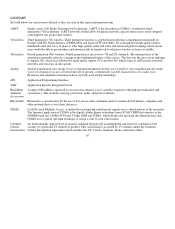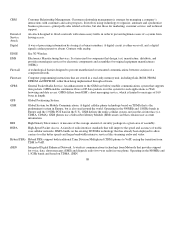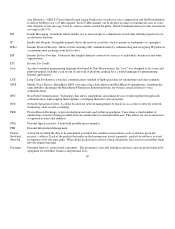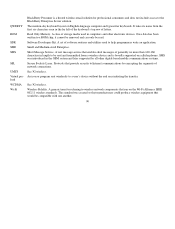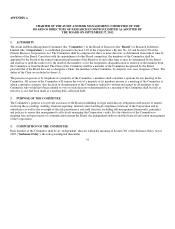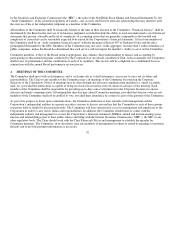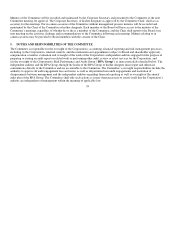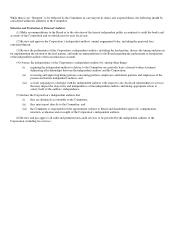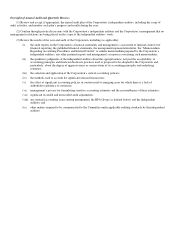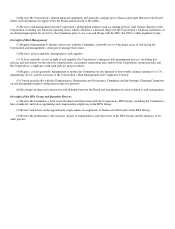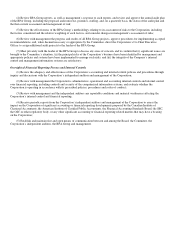Blackberry 2013 Annual Report Download - page 94
Download and view the complete annual report
Please find page 94 of the 2013 Blackberry annual report below. You can navigate through the pages in the report by either clicking on the pages listed below, or by using the keyword search tool below to find specific information within the annual report.
GLOSSARY
Set forth below are certain terms defined as they are used in this annual information form:
87
1xRTT
Single carrier (1X) Radio Transmission Technology. 1xRTT is the first phase in CDMA’s evolution to third-
generation (3G) technology. 1xRTT networks should allow for greater network capacity (more users; fewer dropped
calls) hi
g
h bit rate
p
acket data transfer.
3G wireless
Third generation (3G) wireless. Third generation wireless is a global framework that is implemented regionally in
Europe (UMTS), North America (CDMA2000) and Japan (NTT DoCoMo). 3G is designed for high-speed wireless
multimedia data and voice. It plans to offer high-quality audio and video and advanced global roaming, which means
users would be able to
g
o an
y
where and automaticall
y
be handed off to whatever wireless s
y
stem is available.
4G wireless
Fourth generation (4G) wireless. Fourth generation is successor to 3G and 2G standards. The nomenclature of the
generations generally refers to a change in the fundamental nature of the service. The first was the move from analogue
to digital (2G), which was followed by multi-media support (3G) and now 4G, which refers to all IP packet-switched
networks and increases in data s
p
eeds.
Analog
Analog transmission uses energy waves to transmit information. In the case of wireless voice transmission, the sound
waves of a human voice are converted directly to specific, continuously variable characteristics of a radio wave.
Broadcast and tele
p
hone transmission have t
yp
icall
y
used analo
g
technolo
gy
.
API A
pp
lication Pro
g
rammin
g
Interface.
ASIC A
pp
lication S
p
ecific Inte
g
rated Circuit.
BlackBerry
Authentic
Accessories
A range of BlackBerry approved accessories that enhance a user’s product experience through personalization and
convenience. This includes carrying, protection, audio, and power solutions
Bluetooth®
Bluetooth is a specification for the use of low-power radio communications to wirelessly link phones, computers and
other network devices over short distances.
CDMA
Code Division Multiple Access. A method for transmitting simultaneous signals over a shared portion of the spectrum.
The foremost application of CDMA is the digital cellular phone technology from QUALCOMM that operates in the
800MHz band and 1.9GHz PCS band. Unlike GSM and TDMA, which divides the spectrum into different time slots,
CDMA uses a s
p
read s
p
ectrum techni
q
ue to assi
g
n a code to each conversation.
Common
Criteria
Certification
An internationally approved set of security standards that provide an independent and objective validation of the
security of a particular IT solution or product. This certification is accepted by 25 countries under the Common
Criteria Reco
g
nition A
g
reement which includes the US, Canada, German
y
, France and man
y
others.


